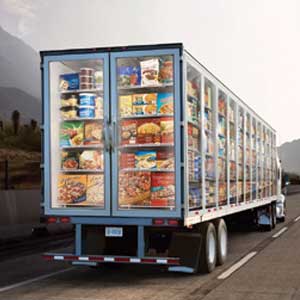THANK YOU FOR SUBSCRIBING

Navigating Growth: Overcoming Challenges In The Retail Supply Chain
Gokhan Bardan, Operations & 3pl Manager Asia Pacific, Lovisa


Gokhan Bardan, Operations & 3pl Manager Asia Pacific, Lovisa
In my experience collaborating with retailers experiencing rapid growth, several key challenges consistently emerge, particularly in labor shortages, rising operational costs, efficiency gaps, accuracy issues, and scalability constraints. Addressing these challenges head-on is essential for businesses aiming to keep pace with their expanding operations and evolving customer demands.
Labor Shortages and Rising Costs:One of the most pressing challenges facing retailers amid growth is the scarcity of skilled labor and the mounting costs associated with workforce management. As businesses expand, the demand for competent personnel often outpaces the available talent pool, leading to increased wage pressures and operational expenses. However, embracing automation and robotics presents a strategic solution to address these challenges effectively.
1. Labor ShortagesAutomation technologies, including robotics and advanced machinery, offer a viable alternative to traditional labor-intensive tasks. By automating repetitive and physically demanding processes, businesses can reduce their reliance on human labor, thereby mitigating the impact of labor shortages on productivity and operational continuity.
Robotics solutions, such as automated picking and packing systems, can significantly augment workforce capabilities by performing repetitive tasks with speed, precision, and consistency. This not only alleviates the burden on existing staff but also enables businesses to maintain operational efficiency and meet customer demand without compromising on quality or timeliness.
2. Rising CostsBy transitioning to automated processes, businesses can achieve significant cost savings over time. While the initial investment in automation technologies may seem daunting, the long-term benefits in terms of reduced labor costs, improved efficiency, and enhanced productivity far outweigh the upfront expenses.
Automation streamlines workflows minimizes errors, and optimizes resource utilization, thereby driving operational efficiencies and cost-effectiveness. Moreover, with advancements in robotics and AI-driven technologies, businesses can achieve higher levels of operational sophistication and adaptability, enabling them to remain agile and competitive in a dynamic market landscape.
Contrary to common misconceptions, automation does not entail the wholesale replacement of human workers but rather complements their capabilities and empowers them to focus on higher-value tasks. By automating routine and repetitive activities, businesses can free up their workforce to engage in more strategic, creative, and customer-centric activities that add tangible value to the business.
Furthermore, automation enhances employee satisfaction by eliminating mundane tasks, reducing physical strain, and fostering a safer working environment. This, in turn, can contribute to higher levels of employee morale, retention, and overall job satisfaction, thereby bolstering organizational resilience and competitiveness in the long run.
Efficiency Gaps and Accuracy IssuesAchieving optimal efficiency and accuracy in warehouse operations is paramount for meeting customer expectations and maintaining competitive advantage. However, inefficiencies stemming from manual processes, outdated systems, and disjointed workflows can hinder productivity and jeopardize service levels. To address these issues, businesses must embrace automation technologies that streamline operations and enhance data accuracy. Implementing advanced warehouse management systems (WMS) and integrating predictive analytics tools can provide real-time insights into inventory levels, demand patterns, and operational performance, enabling proactive decision-making and resource allocation.
Traditional storage systems may fail to accommodate growing inventory volumes, necessitating costly investments in offsite storage solutions
As businesses expand, they often encounter challenges related to limited warehouse space and inefficient utilization of existing facilities. Traditional storage systems may fail to accommodate growing inventory volumes, necessitating costly investments in offsite storage solutions. However, modern automation technologies offer scalable solutions that optimize space utilization and facilitate seamless expansion. Innovations such as Autostore enable businesses to maximize storage density and flexibility while minimizing operational footprint, thereby supporting growth objectives without compromising efficiency or incurring excessive costs.
Embracing Automation for Sustainable GrowthIn today's fast-paced retail landscape, the key to sustainable growth lies in embracing automation as a strategic enabler of operational excellence and competitive differentiation. By automating routine tasks and harnessing the power of data-driven insights, businesses can empower their workforce to focus on value-added activities and agile decision-making. Moreover, automation technologies not only enhance operational efficiency and accuracy but also drive cost savings and customer satisfaction, positioning retailers for long-term success in an increasingly dynamic marketplace.
In conclusion, navigating the complexities of growth in the retail supply chain requires a proactive approach to addressing challenges and leveraging technology-driven solutions. By prioritizing investments in automation, optimizing workforce management practices, and embracing scalable solutions, retailers can position themselves for sustained growth and profitability in an ever-evolving industry landscape.
Weekly Brief
I agree We use cookies on this website to enhance your user experience. By clicking any link on this page you are giving your consent for us to set cookies. More info
Read Also













